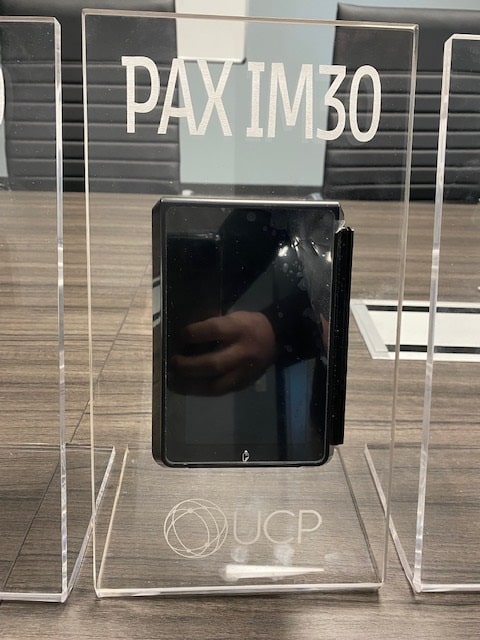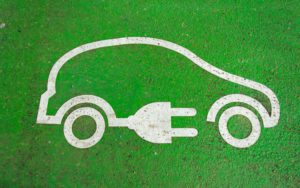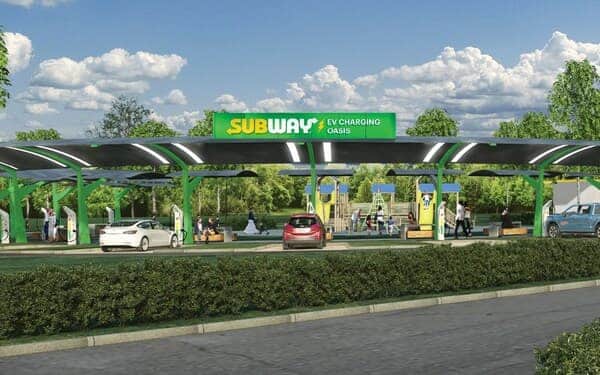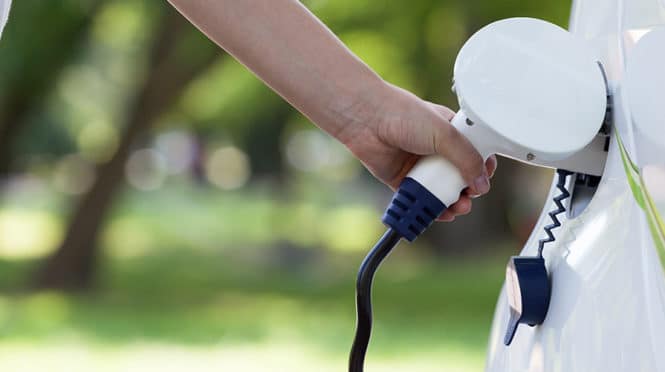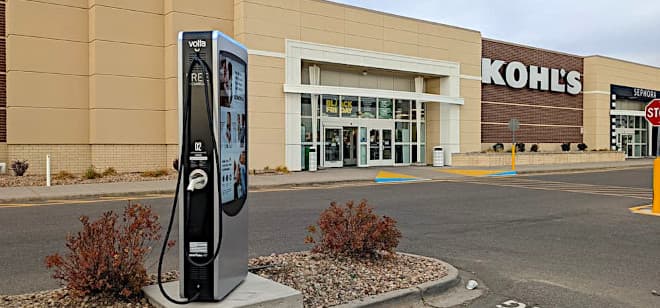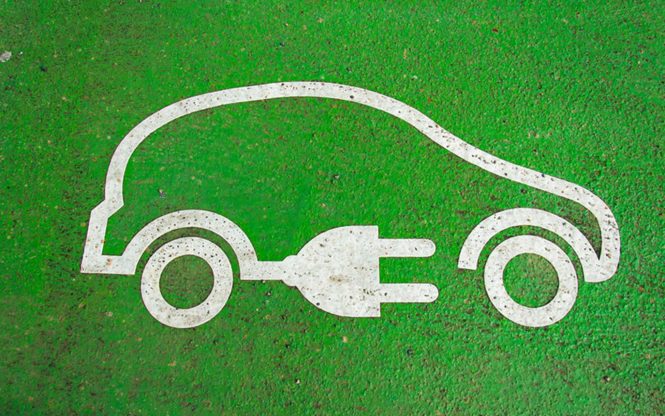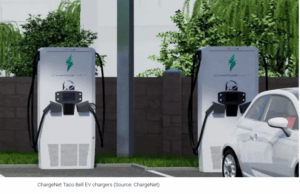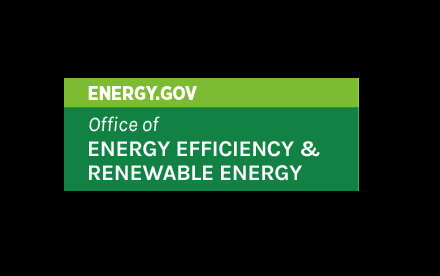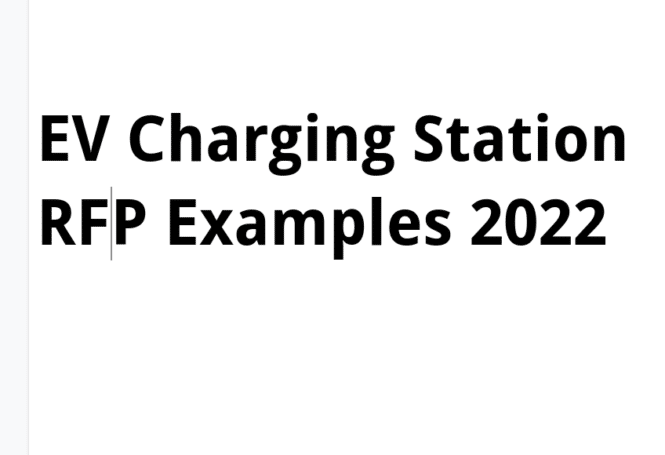A Notice by the Federal Highway Administration on 11/29/2021
SUMMARY:
The recently enacted Bipartisan Infrastructure Law invests in the deployment of electric vehicle (EV) charging infrastructure as one of many important ways to confront the climate crisis. Through a National Electric Vehicle Formula Program (EV Charging Program), the law provides funding to States to strategically deploy EV charging infrastructure and to establish an interconnected network to facilitate data collection, access, and reliability. The law also establishes a discretionary grant program for Charging and Fueling Infrastructure (Charging and Fueling Infrastructure Program) to strategically deploy publicly accessible EV charging infrastructure and hydrogen, propane, and natural gas fueling infrastructure along designated alternative fuel corridors or in certain other locations that are accessible to all drivers of such vehicles. The law directs DOT, in coordination or consultation with the Department of Energy (DOE), to develop guidance for both programs. Through this notice, FHWA invites public comments to inform the development of the guidance. FHWA is especially interested in comments suggesting ways that the guidance could promote equity in the deployment of EV charging infrastructure under these programs.
DATES:
Comments would be most useful if they are received on or before January 28, 2022 to allow for their consideration during development of the EV Charging Program guidance. FHWA will consider comments received after the due date to the extent practicable.
ADDRESSES:
To ensure that you do not duplicate your docket submissions, please submit comments by only one of the following means:
• Federal eRulemaking Portal: Go to http://www.regulations.gov and follow the online instructions for submitting comments.
• Mail: Docket Management Facility, U.S. Department of Transportation, 1200 New Jersey Avenue SE, West Building Ground Floor, Room W12-140, Washington, DC 20590-0001;
• Hand Delivery: West Building Ground Floor, Room W12-140, 1200 New Jersey Avenue SE, Washington, DC 20590-0001, between 9 a.m. and 5 p.m. e.t., Monday through Friday, except Federal holidays. The telephone number is (202) 366-9329;
• Instructions: You must include the agency name and docket number at the beginning of your comments. All comments received will be posted without change to http://www.regulations.gov,, including any personal information provided.
FOR FURTHER INFORMATION CONTACT:
Kerry Rodgers, Office of the Chief Counsel, (202) 366-1376, or via email at [email protected]. FHWA is located at 1200 New Jersey Avenue SE, Washington, DC 20590. Office hours are from 8:00 a.m. to 4:30 p.m. e.t., Monday through Friday, except Federal holidays.
SUPPLEMENTARY INFORMATION:
Electronic Access and Filing
A copy of this Notice, all comments received on this Notice, and all background material may be viewed online at http://www.regulations.gov using the docket number listed above. Electronic retrieval help and guidelines are also available at http://www.regulations.gov. An electronic copy of this document also may be downloaded from the Office of the Federal Register’s website at www.FederalRegister.gov and the Government Publishing Office’s website at www.GovInfo.gov.
Confidential Business Information
Confidential Business Information (CBI) is commercial or financial information that is both customarily and actually treated as private by its owner. Under the Freedom of Information Act (FOIA) (5 U.S.C. 552), CBI is exempt from public disclosure. If your comments responsive to this RFI contain commercial or financial information that is customarily treated as private, that you actually treat as private, and that is relevant or responsive to this RFI, it is important that you clearly designate the submitted comments as CBI. Pursuant to 49 CFR 190.343, you may ask FHWA to give confidential treatment to information you give to the Agency by taking the following steps: (1) Mark each page of the original document submission containing CBI as “Confidential”; (2) send FHWA, along with the original document, a second copy of the original document with the CBI deleted; and (3) explain why the information you are submitting is CBI. Unless you are notified otherwise, FHWA will treat such marked submissions as confidential under the FOIA, and they will not be placed in the public docket of this RFI. Submissions containing CBI should be sent to Kerry Rodgers, FHWA Office of the Chief Counsel, 1200 New Jersey Avenue SE, Washington, DC 20590. Any comment submissions that FHWA receives that are not specifically designated as CBI will be placed in the public docket for this matter.
Background
The Bipartisan Infrastructure Law, enacted as the Infrastructure Investment and Jobs Act (IIJA), Public Law 117-58 (Nov. 15, 2021), includes important new programs to address climate change by reducing carbon emissions. Among these programs is a national EV Charging Program to provide funding that FHWA shall distribute among the States to strategically deploy EV charging infrastructure and to establish an interconnected network to facilitate data collection, access, and reliability. Funds must be used for: (1) The acquisition and installation of EV charging infrastructure to serve as a catalyst for the deployment of such infrastructure and to connect it to a network to facilitate data collection, access, and reliability; (2) proper operation and maintenance of EV charging infrastructure; and (3) data sharing about EV charging infrastructure to ensure the long-term success of investments made under the program. The Federal share payable for projects funded under the EV Charging Program is 80 percent. EV Charging Program funds may be used to contract with a private entity for acquisition and installation of publicly accessible EV charging infrastructure, and the private entity may pay the non-Federal share of the project cost. However, funds must be used for projects directly related to vehicle charging and only for EV charging infrastructure that is open to the general public or to authorized commercial motor vehicle operators from more than one company. Further, any EV charging infrastructure acquired or installed with program funds must be located along a designated alternative fuel corridor, unless a State determines, and the Secretary of Transportation (Secretary) certifies, that the designated alternative fuel corridors in the State are fully built out. In that case, the State could use the funds for EV charging infrastructure on any public road or in other publicly accessible locations.
The Bipartisan Infrastructure Law also requires that a State, by a deadline to be set by DOT, provide a plan to DOT describing how the State intends to use the funds it receives under the EV Charging Program for each fiscal year in which funds are made available. No later than 120 days after the deadline for submittal of the State plans, DOT is required to issue a publicly available report on its website summarizing each State plan submitted and assessing how the State plans to make progress towards the establishment of a national EV charging infrastructure network. If a State fails to submit the required plan, or if DOT determines that a State has not taken action to carry out its plan, DOT may, as applicable, withhold or withdraw funds made available under the EV Charging Program for the fiscal year after providing notice to and consulting with the State and providing an opportunity for the State to address any concerns and implement its plan or to appeal DOT’s decision to withhold or withdraw funds. In such situations, DOT may award such funds on a competitive basis to local jurisdictions within the State for use on projects that meet the EV Charging Program’s eligibility requirements. If DOT determines that such withheld or withdrawn funds cannot be fully awarded to local jurisdictions within the State, DOT is required to distribute any remaining funds among other States that have not had funds withheld or withdrawn under the program as the law provides.
Another new program is the Charging and Fueling Infrastructure Program, a competitive grant program to strategically deploy publicly accessible EV charging infrastructure and hydrogen, propane, and natural gas fueling infrastructure (eligible fueling infrastructure) along designated alternative fuel corridors or in certain other locations that are accessible to all drivers of such vehicles. Through this program for corridor and community charging, the Secretary will award grants to eligible entities that include States or political subdivisions, metropolitan planning organizations, local governments, special purpose districts or public authorities with a transportation function, Indian tribes, U.S. territories, authorities or agencies owned by one or more of these eligible entities, or groups of eligible entities. Eligible entities must use grants to contract with a private entity for acquisition and installation of publicly accessible EV charging infrastructure or eligible fueling infrastructure that is directly related to vehicle charging or fueling. Publicly accessible EV charging infrastructure or eligible fueling infrastructure installed with grants under this program must be located along a designated alternative fuel corridor, except in the case of the community grants described below.
The Bipartisan Infrastructure Law requires that the Secretary reserve 50 percent of the amounts made available each fiscal year to carry out the Charging and Fueling Infrastructure Program to provide community grants to eligible entities. Eligible entities include those previously described and State or local authorities that own publicly accessible transportation facilities. The Secretary may award community grants for projects that are expected to reduce greenhouse gas emissions and to expand or fill gaps in access to publicly accessible EV charging infrastructure or eligible fueling infrastructure, including certain development phase activities and the acquisition or installation of such infrastructure that is directly related to vehicle charging or fueling, including any related construction or reconstruction and the acquisition of real property directly related to the project. Projects that receive community grants may be located on any public road or in other publicly accessible locations such as parking facilities at public buildings, public schools, and public parks, or in publicly accessible parking facilities owned or managed by a private entity.
The law requires the Secretary, in awarding community grants, to give priority to projects that expand access to EV charging and eligible fueling infrastructure in rural areas, low- and moderate-income neighborhoods, and communities with a low ratio of private parking spaces to households or a high ratio of multi-unit dwellings to single family homes. The Secretary also must consider the extent to which a project contributes to geographic diversity among eligible entities, including a balance between urban and rural communities, and meets current or anticipated market demands for charging or fueling infrastructure.
The Federal share of the cost of a project carried out with a grant under the Charging and Fueling Infrastructure Program shall not exceed 80 percent of the total project cost. Projects carried out under the program are treated as projects on a Federal-aid highway and are subject to certain other requirements.
Development of Guidance
The Bipartisan Infrastructure Law directs DOT, in coordination with DOE and within 90 days of the law’s enactment, to develop guidance for States and localities to strategically deploy EV charging infrastructure through the EV Charging Program, based on the consideration of nine factors. The law also directs DOT, during the redesignation of alternative fuel corridors under 23 U.S.C. 151, to issue a report that summarizes best practices and provides guidance, developed through consultation with DOE, for project development of EV charging infrastructure and hydrogen, propane, and natural gas fueling infrastructure at the State, Tribal, and local levels to allow for the predictable deployment of that infrastructure. The guidance we develop also may be relevant to EV charging infrastructure that receives funding from other Federal funding sources.
Request for Comments and Information
As we begin to develop the guidance for the EV Charging Program and for project development of EV charging infrastructure, and we prepare to implement the Charging and Fueling Infrastructure Program, FHWA requests comments and information from the public. In particular, FHWA requests comments to inform its development of the statutorily required EV Charging Program guidance. Please indicate in your written comments the number(s) of the considerations(s) you are commenting on and provide specific examples or information to illustrate your comments where possible. The statutory considerations for the EV Charging Program are:
1. The distance between publicly available EV charging infrastructure;
2. Connections to the electric grid, including electric distribution upgrades; vehicle-to-grid integration, including smart charge management or other protocols that can minimize impacts to the grid; alignment with electric distribution interconnection processes, and plans for the use of renewable energy sources to power charging and energy storage;
3. The proximity of existing off-highway travel centers, fuel retailers, and small businesses to EV charging infrastructure acquired or funded under the Program;
4. The need for publicly available EV charging infrastructure in rural corridors and underserved or disadvantaged communities;
5. The long-term operation and maintenance of publicly available EV charging infrastructure to avoid stranded assets and protect the investment of public funds in that infrastructure;
6. Existing private, national, State, local, Tribal, and territorial government EV charging infrastructure programs and incentives;
7. Fostering enhanced, coordinated, public-private or private investment in EV charging infrastructure;
8. Meeting current and anticipated market demands for EV charging infrastructure, including with regard to power levels and charging speed, and minimizing the time to charge current and anticipated vehicles; and
9. Any other factors, as determined by the Secretary.
In connection with question 9, please describe any other factors that you suggest that we consider in developing the EV Charging Program guidance.
FHWA also requests comments to inform the implementation of the Charging and Fueling Infrastructure Program to provide discretionary grants for corridor and community charging. Specifically:
10. Please provide examples of best practices relating to project development of EV charging infrastructure and hydrogen, propane, and natural gas fueling infrastructure at the State, Tribal, and local levels.
11. What topics do you suggest that we address in guidance on project development of EV charging infrastructure and hydrogen, propane, and natural gas fueling infrastructure at the State, Tribal, and local levels to allow for the predictable deployment of that infrastructure?
12. Please provide any suggestions to inform the administration of competitive grants under the Charging and Fueling Infrastructure Program for corridor and community charging.
Authority: Public Law 117-58; 49 CFR 1.81.
Signed in Washington, DC.
Stephanie Pollack,
Deputy Administrator, Federal Highway Administration.
